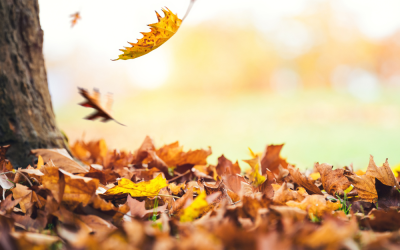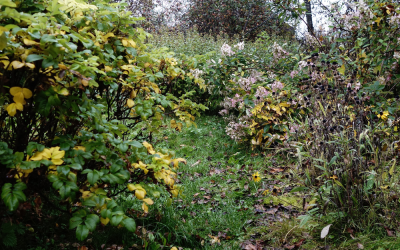Spotlight on Native UK Tree Species
Our native tree species have evolved over millennia to thrive in the British climate. They are the backbone of our woodlands, providing habitat for countless creatures and offering a myriad of benefits to humans. Let’s explore some of the most common and beloved UK native trees.
The Oak (Quercus)
A symbol of strength and longevity, the oak is a cornerstone of our woodlands. With its distinctive lobed leaves and mighty presence, it offers shelter and food for a vast array of wildlife. Oaks are slow-growing but incredibly long-lived, with some specimens reaching over a thousand years old.
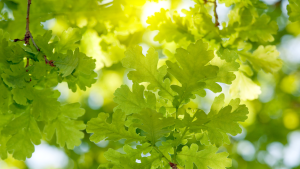
The Beech (Fagus sylvatica)
The beech is renowned for its smooth, grey bark and dense canopy. It creates a cool, shady environment beneath its branches, perfect for woodland flora. Beechnuts are a valuable food source for wildlife, and the timber is prized for its versatility.
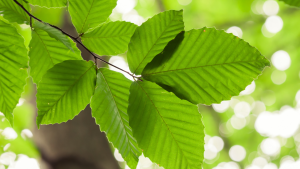
The Ash (Fraxinus excelsior)
With its elegant, compound leaves and rapid growth, the ash is a familiar sight in many parts of the UK. Unfortunately, ash dieback has devastated ash populations in recent years. However, there are signs of hope with some trees showing resistance to the disease.
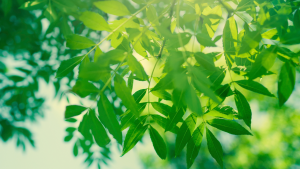
The Birch (Betula)
The birch is a pioneer species, often the first tree to colonise disturbed land. Its delicate, triangular leaves and white bark make it easily recognisable. Birch trees provide important habitat for insects and birds, and their sap can be used to make birch beer.
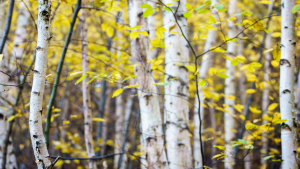
The Rowan (Sorbus aucuparia)
Also known as mountain ash, the rowan is a small to medium-sized tree with clusters of bright red berries. These berries are a vital food source for birds during winter. The rowan is often associated with folklore and magic.
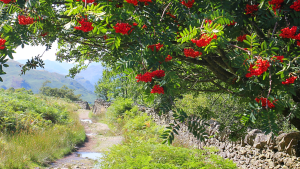
Benefits of Native Trees
Native trees offer a multitude of benefits to both people and the environment:
- Biodiversity: They provide essential habitats for countless species of plants, insects, birds, and mammals.
- Climate regulation: Trees absorb carbon dioxide, release oxygen, and help regulate temperature and humidity.
- Soil health: Their roots prevent soil erosion and improve soil structure.
- Water cycle: Trees play a crucial role in the water cycle by intercepting rainfall and reducing runoff.
- Aesthetics: They enhance the beauty of our landscapes and provide recreational opportunities.
Caring for Your Native Trees
While native trees are generally hardy, they still require some care to thrive:
- Planting: Choose the right location based on the tree’s specific requirements for sunlight, soil, and space.
- Watering: Young trees need regular watering, especially during dry periods.
- Pruning: Regular pruning can help maintain the tree’s shape and health.
- Protection: Protect young trees from browsing animals and physical damage.
- Monitoring: Keep an eye out for pests and diseases and take appropriate action if necessary.
Invasive Species: A Threat to Our Woodlands
Invasive tree species are non-native plants that can spread rapidly and outcompete native vegetation. They pose a serious threat to biodiversity and can cause significant environmental damage.
Common Invasive Tree Species
Some of the most problematic invasive tree species in the UK include:
- Rhododendron ponticum: A large evergreen shrub with toxic leaves and dense thickets.
- Japanese knotweed: A vigorous bamboo-like plant that can cause structural damage to buildings.
- Himalayan balsam: A tall annual plant with pink flowers that spreads rapidly along riverbanks.
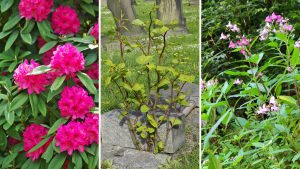
Managing Invasive Species
Controlling invasive species can be challenging, but it’s essential to protect our native ecosystems. Here are some key strategies:
- Early detection: Regular monitoring can help identify and address infestations early on.
- Manual removal: Small infestations can often be controlled by hand pulling or digging up plants.
- Chemical control: In some cases, herbicides may be necessary, but they should be used carefully and responsibly.
- Biological control: Introducing natural enemies of invasive species can sometimes be effective.
- Prevention: Avoid planting invasive species in your garden and be careful when disposing of garden waste.
By understanding the importance of native tree species and taking steps to protect them from invasive threats, we can help to preserve our precious woodlands for generations to come. Check out this blog from The National Trust about other local species of trees in the UK, if you’d like to read more.

